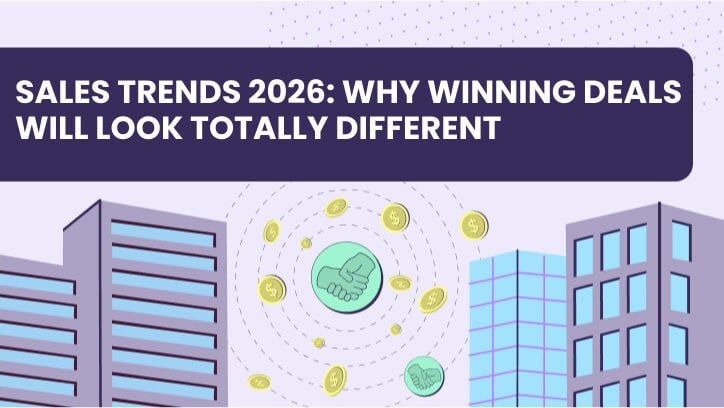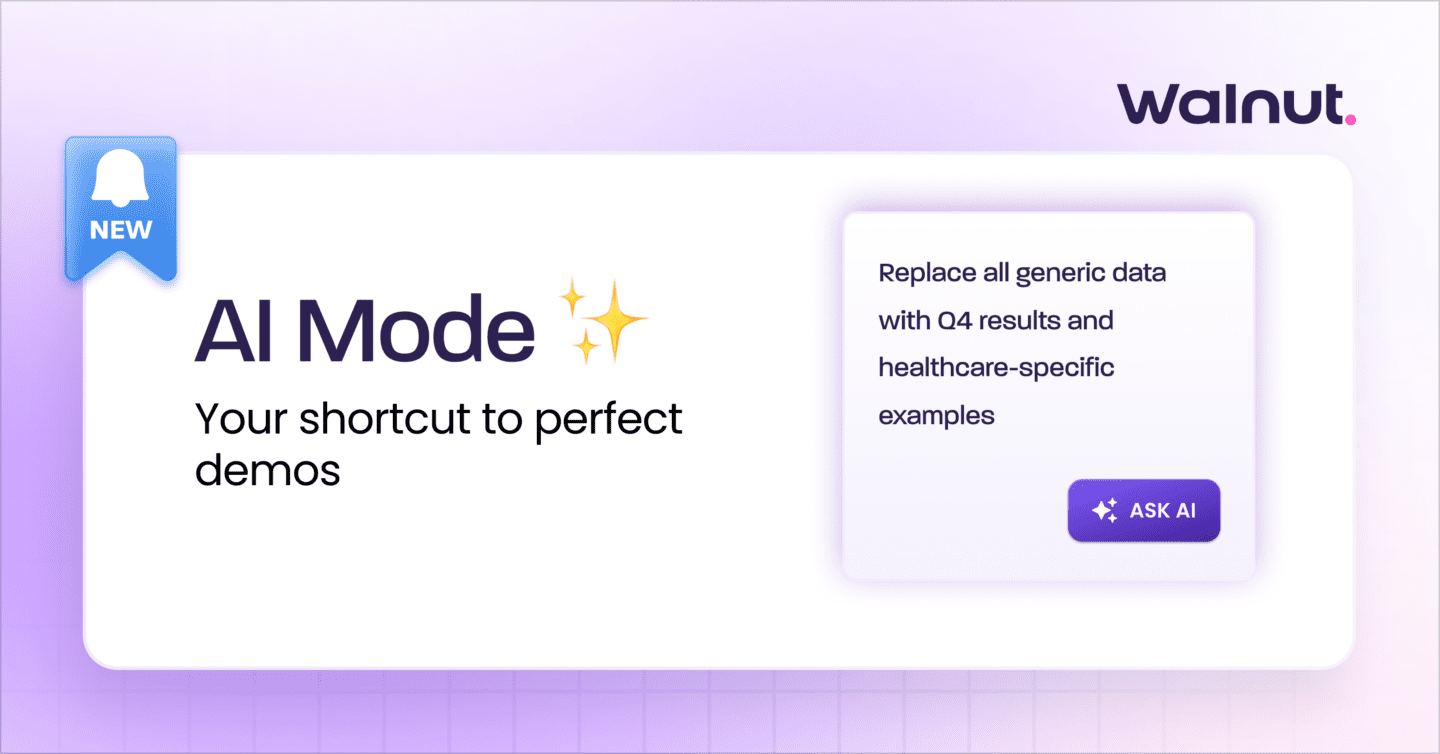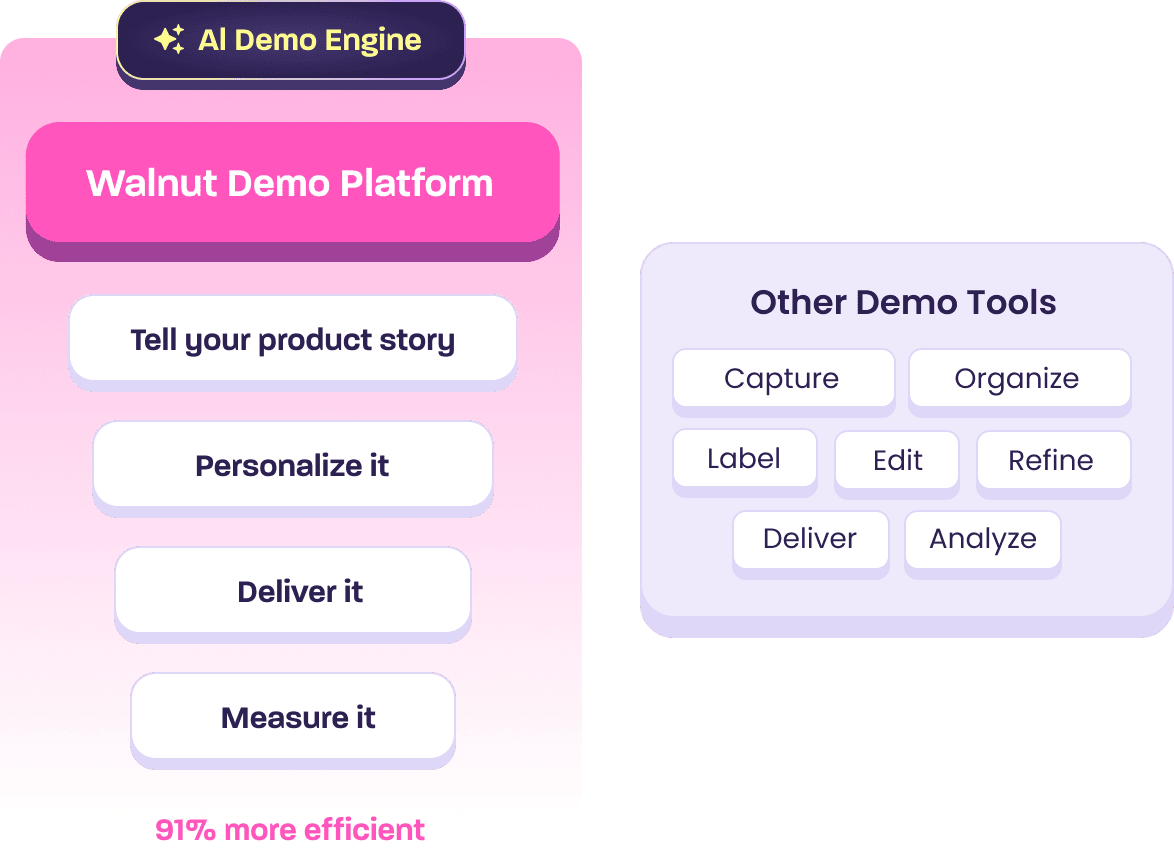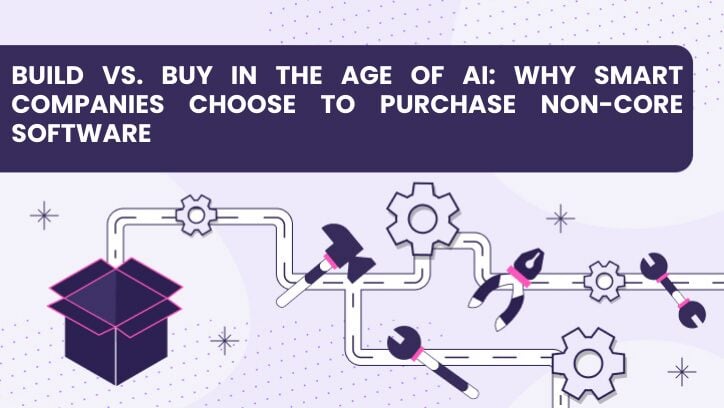As you plan for 2026, you can’t ignore the sales trends for 2026 that are redefining SaaS. In this guide, we explain why each trend is accelerating, how it affects your org design and toolchain, and which practical moves you should make now. Finally, we show how leading teams stitch interactive demos and digital sales rooms into this new motion to win faster with less waste.
In this post, we break down each trend with why it is happening, what it means for your org design and toolchain, and the practical moves you can make now. You will see how leading teams stitch interactive demos and digital sales rooms into this new motion to win faster with less waste.
1) The GTM engineer becomes a standard seat
Why it is happening: Sales stacks are more programmatic, data is fragmented, and buyers expect tailored experiences across channels. Teams need an operator who can wire systems, automate steps, and translate revenue strategy into workflow logic.
Org and toolchain impact: Place GTM engineering inside RevOps or Sales Ops with a dotted line to Sales leadership. The role owns workflow automation, routing, scoring logic, demo and deal room templates, and AI enablement.
Moves to make now:
- Draft the JD with clear outcomes: pipeline velocity, coverage, and time to value on tooling.
- Centralize event streams and define golden buyer fields that trigger demos or deal room updates.
- Treat demos and deal rooms as programmable objects, not assets.
KPIs: Time to first touch for new leads, demo speed to value, percent of opportunities with a deal room.
Where Walnut helps: Use Playlists to standardize interactive demo flows the GTM engineer can govern, then auto-personalize with Smart Suggestions. Trigger deal room creation from your CRM using Walnut’s Rule Engine.
2) GTM teams are now content creators
Why it is happening: Buyers research asynchronously. Short, specific, and product-close content outperforms generic assets. AEs and SEs need materials that answer “what, why, how” without waiting for a live call.
Org and toolchain impact: Enablement becomes a publishing desk. You need lightweight workflows for capturing product screens, writing talk tracks, and packaging micro-assets for reuse.
Moves to make now:
- Stand up a “demo newsroom” cadence: weekly capture, edit, publish, retire.
- Arm sellers with 30–90 second interactive walkthroughs for common objections.
- Track which pieces influence stage progression, not only views.
KPIs: Content-influenced stage lift, reply rate to assets sent, average time in stage after demo share.
Where Walnut helps: StoryCapture and EditsAI let non-technical creators ship polished demos quickly. The Screens Library blends HTML captures with video or images for richer stories.
3) AI flattens technical moats, brand and customer centricity win
Why it is happening: Baseline functionality is easier to replicate. The durable edge becomes knowing your customer better, solving their exact workflow, and earning trust with a clear point of view.
Org and toolchain impact: Invest in voice of customer loops and message testing. Product, Marketing, and Sales need a shared narrative that shows “your world, your outcomes” inside the product.
Moves to make now:
- Rebuild your demo storyline around customer jobs and triggers, not feature lists.
- Codify a brand POV that sellers can repeat in 20 seconds.
- Tie adoption proof points to business outcomes and surface them early.
KPIs: Win rate against “do nothing,” multi-thread depth per deal, brand recall in discovery.
Where Walnut helps: Use Smart Suggestions to align demo templates to persona pain. Playlists let buyers choose their own path, which makes your brand feel like a guide rather than a vendor.
4) AI fluency becomes table stakes in every GTM JD
Why it is happening: AI touches prospecting, research, notes, call prep, and post-sale enablement. Teams want hires who can orchestrate AI responsibly and measurably.
Org and toolchain impact: Define AI-acceptable use, evaluation rubrics, and data boundaries. Bake AI tasks into onboarding and scorecards.
Moves to make now:
- Add JD lines like “Build prompt libraries, evaluate AI outputs, and document workflows.”
- Standardize a starter stack for research, sequencing, and content QA.
- Track time saved and quality lift to justify investment.
KPIs: Hours reclaimed per rep per week, QA pass rate on AI-assisted assets, compliance incidents avoided.
Where Walnut helps: AI-powered creation accelerates demo build time while keeping governance in the hands of Ops and Enablement.
5) Digital sales rooms become the system of engagement
Why it is happening: Deals span many stakeholders and long cycles. Email threads and scattered links break context. A single shared space keeps momentum and clarifies next steps.
Org and toolchain impact: Treat the deal room as the canonical deal artifact. Connect it to CRM stages, share ownership across Sales and SE, and route all buyer interactions through it.
Moves to make now:
- Launch rooms at first serious interest, not after the proposal.
- Curate a living checklist: mutual action plan, demo replays, security docs, pricing options.
- Personalize by persona and role, then measure engagement to guide next touch.
KPIs: Stakeholders added per deal, actions completed in room, cycle time from room creation to close.
Where Walnut helps: Interactive Deal Rooms centralize assets, interactive demos, and mutual action plans. Walnut Uncover surfaces account-level signals from anonymous viewers so your team can multi-thread confidently.
Open a room for your next deal
6) Winning AI outbound is a stack, not a single bot
Why it is happening: One-click AI SDR tools create noise. High-performing teams combine intent, research, message testing, identity verification, human review, and precise handoffs to live conversations.
Org and toolchain impact: Outbound requires a modular architecture and a QA gate. GTM engineering owns orchestration. Reps own judgment and personalization.
Moves to make now:
- Build a minimal viable stack: firmographic and intent data, AI research, message generation, compliance checks, enrichment and verification, sending, and response routing.
- Insert interactive demos as the first value asset and route high-intent viewers into a deal room.
- Run weekly experiments and retire underperforming plays quickly.
KPIs: Positive reply rate, demo-start rate from first touch, cost per qualified conversation.
Where Walnut helps: Use Walnut Uncover to identify engaged accounts, then drop a 60-second interactive demo directly into sequences. Successful views can auto-create a deal room with your Rule Engine.
Plug Walnut into your outbound
7) Demo technology evolves from a presentation tool to a revenue intelligence engine
Why it is happening: Screen-share demos don’t scale in async buying. Buyers expect self-service exploration before sales engagement. AI enables automatic personalization at account level. Demo behavior data feeds scoring, routing, and predictive models across the revenue stack.
Org and toolchain impact: Demo platforms integrate with CRM, marketing automation, and data warehouses as first-class revenue systems. RevOps owns demo analytics and workflow triggers. Sales and SE share template governance. Marketing owns top-of-funnel self-service experiences.
Moves to make now:
- Wire AI personalization to CRM fields. Map industry, use case, and intent signals to demo variants. Stop building manual versions for each segment.
- Deploy interactive demos as qualification gates. Replace form-fills with 60-90 second explorable experiences. Route high-engagement viewers to deal rooms automatically.
- Launch self-service demos for PLG and inbound. Let prospects explore product without trial friction or support overhead. Track feature engagement to inform first sales conversation.
- Connect demo analytics to lead scoring and opportunity health. Feed engagement depth, feature interest, and internal sharing into your scoring model and CRM stages.
- Build demo workflow triggers. If prospect views pricing twice, create deal room. If champion shares with three colleagues, alert AE and trigger expansion sequence.
- Standardize demo-to-room handoff. First demo is discovery. High-intent behavior creates room with relevant assets, MAP, and next-step clarity.
KPIs: Self-service demo completion rate, features explored per session, internal share rate, demo-to-meeting conversion, engagement score correlation with win rate, time from first demo to first call.
Where Walnut helps: Interactive demos replace screen shares with click-through experiences. Smart Suggestions auto-personalize to prospect context using CRM data. Playlists let buyers choose their path. StoryCapture and EditsAI let non-technical teams ship demos quickly. Uncover reveals anonymous account engagement. Rule Engine triggers deal room creation and rep alerts based on demo behavior.
Bringing it together
The common thread is operational clarity. Define the roles, codify the workflows, and make your product the hero of every interaction. Interactive demos and digital sales rooms are the connective tissue that let you sell the way buyers buy: asynchronously, collaboratively, and with proof.
Ready to operationalize these trends in your pipeline this quarter?





